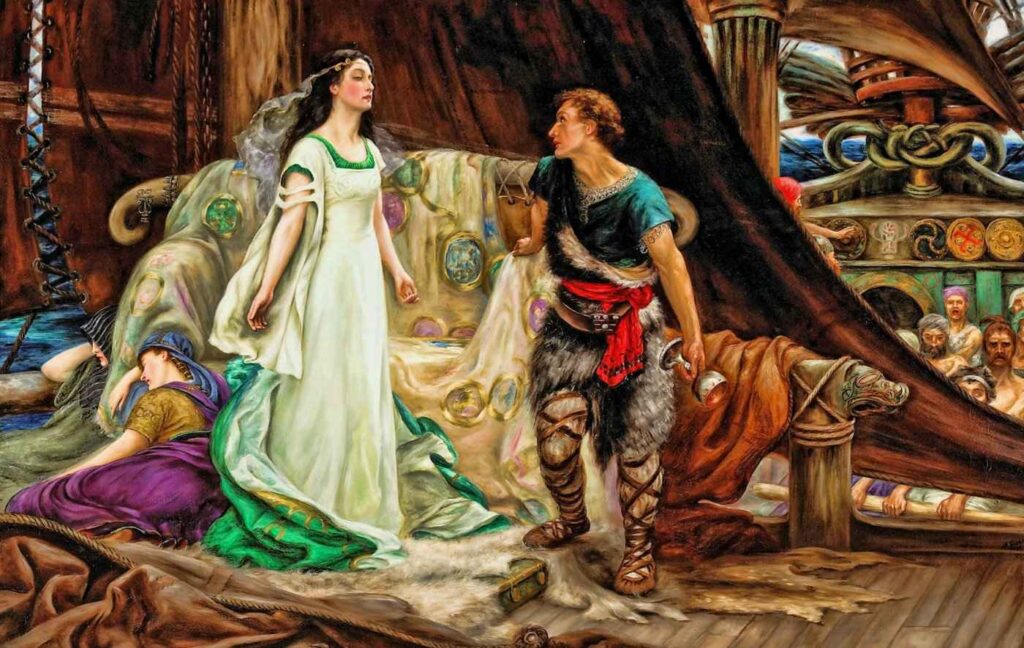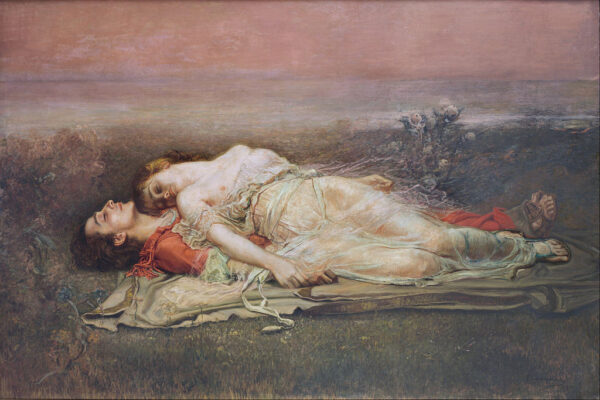A legendary love story: Tristan and Isolde
A legendary love story: Tristan and Isolde
A legendary love story: Tristan and Isolde
-
Hannah
-
Hannah

The Celtic legend was first put in writing by poets in medieval times, but predates the twelfth century, a tale told in courts and at firesides to entertain and inspire. Tristan (also spelled called Tristram or Tristrem) was a Cornish knight and Isolde (also spelled Iseult, Isolt or Yseult) was an Irish princess. Various versions of the legend exist; here is my favourite, comprising the most common elements of the plot:
Tristan travels to Ireland on a mission for his uncle, King Mark of Cornwall: he is to propose a marriage between Mark and Isolde. Once Tristan slays a dragon that has been plaguing Ireland, the Irish are only too happy to agree to Tristan’s request, packing Isolde off with the knight along with a love potion to ensure she’ll fall in love with King Mark.
So begins the journey home to Cornwall with Isolde, but on their way Tristan and the princess take the love potion (in some versions this is accidental, and in others Isolde quietly slips the potion in Tristan’s drink, for she has feelings for this brave, handsome knight). Of course, they at once fall madly in love – and I mean madly: this is a burning, encompassing, will-die-for-you love.
A passionate affair ensues – and it is an affair, for Tristan and Isolde are still bound by loyalty to the king and, once in Cornwall, Isolde marries Mark. Though they know their relationship is so dangerous, whether because of the potion or their own feelings, neither the knight nor the princess can bury their love for each other.
The king, meanwhile, is plagued by dreams that his new wife is being unfaithful with his knight. Finally, after a series of attempts to catch the lovers in their adultery, Mark acquires what he determines to be proof of their guilt and he sentences them to death: Isolde by burning at the stake and Tristan by hanging. On the way to his execution, Tristan breaks free of the guards, leaps from a chapel and rescues Isolde, and the lovers flee to the forest of Morrois.
They are eventually discovered there by Mark. Somehow, Tristan is able to talk Mark into a truce: Isolde will remain in Cornwall at Mark’s side, as his wife, and Tristan will leave. This he does, travelling to Brittany, where he marries, for her title, the beautiful daughter of a duke, Isolde of the White Hands.
Continuing his knightly duties in Brittany, Tristan is wounded by a poisoned lance in the course of trying to rescue a damsel being held by six other knights. As he lies dying, he calls desperately for Isolde. His wife is appalled to discover the Isolde for whom he is calling – the ‘only one who can heal him’, he is sure – is not herself, but a princess in Cornwall.
Isolde is duly sent for, and they watch the waters for the messenger’s ship. If Isolde is aboard, it will fly a white sail; if she has refused to come, the sail will be black. It is Isolde of the White Hands who spots the ship, flying a white flag; jealous and angry, she reports to Tristan that the sail is black. Tristan turns his face away, and dies.
When Isolde arrives, she finds she is too late. The agony of this kills her, and she joins Tristan in death.
From Tristan’s grave grows a thick bramble, and from Isolde’s, a rose tree, and the two intertwine. Though King Mark tries to sever the connections, hacking back the branches, always they grow back and intertwine. Nothing can part the lovers now.
This legend, it is believed, was the inspiration for the Arthurian legend of Lancelot and Guinevere, and for centuries since it has been inspiring writers and poets and painters and composers and film-makers. If you have the chance, do watch the 2006 movie starring James Franco and Sophia Myles; it’s a beautiful, poignant interpretation of the legend with a memorable ending.
[Images: 1. Tristan & Isolde by Herbert James Draper (1901); 2. The End of the Song by Edmund Leighton (1902); 3. Tristan and Isolt (Death) by Rogelio de Egusquiza (1910); all public domain.]

